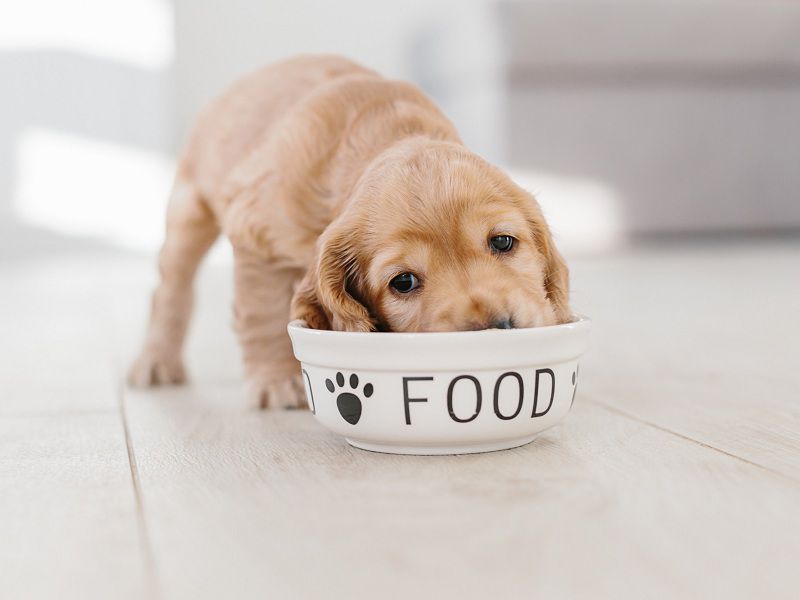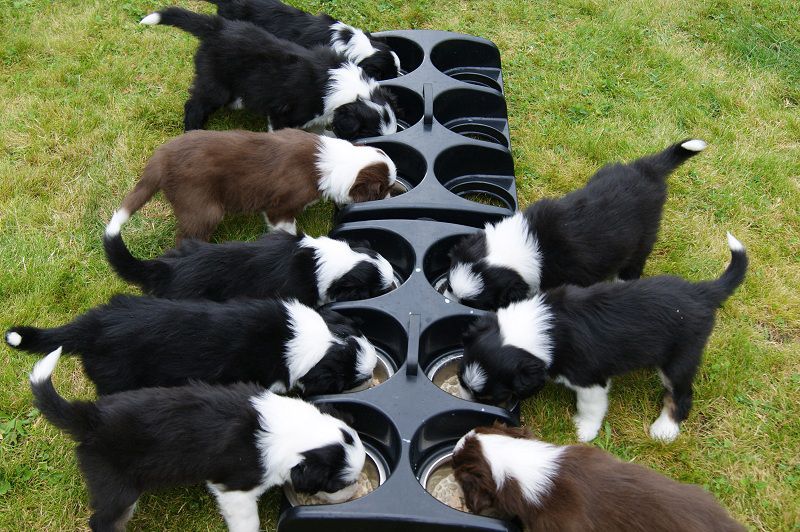Now that you have a puppy, it’s time to choose the best puppy food that is healthy, nutritious, and tasty. Each puppy has different needs, depending on the breed, size, and age. It’s recommended that you consult your veterinarian to determine what diet your dog needs as it grows.
Check out these six tips that help you choose the best food for your new pet!

1. Choose the Right Brand
As soon as you walk into the pet supplies shop, you are surrounded by dozens of food options for your puppy. Some brands will be showcased if they’re running a sale or promotion, and it can be tempting to pick up the first food you see. It’s essential to do some research into the dog food brand and see how all the brands compare to each other.
Here’s what to look for when choosing a brand:
- AAFCO Certification – the AAFCO is a national organization that regulates animal foods and drugs for animals. If the brand carries the certification, it means the formula has been tested and is safe for dogs to eat. It ensures that the formula has been tested on dogs and will not cause nutrient deficiencies.
- Scientific research: you want to choose brands that invest money in research and innovation to create healthy and balanced dog food formulas. Puppies require particular nutrients, and all puppy formulas should contain these veterinarian-approved nutrients.
The three-types of puppy food brands:
Super-premium: these are the highest quality foods with the highest nutrient density. The meals are easy to digest, and a puppy doesn’t need to eat as much compared to a portion of less nutrient-dense food. These foods have higher fat content and taste better; therefore, your pup will be eager to eat.
Premium-brands: these are the foods you can find at most grocery stores. They are affordable and contain quality ingredients. If your puppy doesn’t have any special dietary needs or sensitivities, you can feed it premium brands.
Generic brands: these types of food are sold at discount outlets or as a store’s generic brand. They usually contain lower quality ingredients that are harder to digest. These foods are often full of fillers instead of protein and may result in digestive issues such as diarrhea in puppies.

2. Consider Puppy Size
Each dog breed has different needs. A small Yorkie puppy will not need the same amount of nutrients as a Cane Corso large dog breed. That’s why you need to choose breed-specific formulas.
For example, consider the bone growth rate in puppies of different sizes. Food for large breeds usually contains a higher ratio of calcium because those dogs need to develop big healthy bones. Calcium and phosphorous are essential nutrients for healthy, strong bones and preventing joint disease later on in life.
3. Healthy Puppy Weight
Your puppy needs to have a healthy weight for its size and age. Underweight puppies risk underdevelopment and health problems later in life. Some puppies may begin to overeat and become overweight if they are not fed the correct amount of food. Overweight puppies risk diabetes, heart disease, arthritis, and high blood pressures. These are very serious medical issues every owner wants to avoid.
Here’s what to look for:
- An underweight puppy will have highly visible ribs and hips.
- An overweight puppy will have lots of excess weight covering its ribs.
- A pup with an ideal weight will have a visible outline of the waist, and the belly looks tucked in.

4. Quality Ingredients
The ingredients in your puppy’s dog food should be healthy and balanced. The formula of puppy food is different from adult dog food because it needs to contain vital nutrients such as DHA – and essential fatty acid. Your puppy’s diet should include a high amount of DHA. This fatty acid helps brain development, contributes to eye and ear health, and improves the animal’s memory, making it easier to train.
Other essential nutrients to look for in puppy food: calcium, protein, fat, and phosphorous.
5. Easy to eat
Puppy teeth are not developed and strong like adult dog teeth. Therefore, they have a hard time chewing certain foods. If you have a small breed puppy, choose small kibble size, and if your puppy is big, choose medium-sized kibble.
Small kibble is usually between seven to eight millimeters. Medium is eleven to twelve, whereas large kibble is fifteen to sixteen millimeters in size. Choose the size most suited to your puppy’s mouth.
The same concept applies to wet food. Check the label for chunk sizes and choose food that is suitable for the size of your puppy. Puppies that are only 2 or 3 months old will need a paste-like textured food because they cannot chew food properly at that age.
6. Ideal Calorie Intake
A puppy needs to consume more calories than an adult dog because puppies are energetic, they consume lots of energy while playing, and their bodies are growing at a rapid rate. Around half of a puppy’s daily calorie intake is spent on their tissue growth. For this reason, the puppy needs to eat enough calories to provide the body with all the nutrients it needs.
To figure out how much food to give your pet, check a puppy feeding chart, which calculates how much you need to feed based on the puppy’s predicted adult weight and the feeding instructions on the food label.

On average, a 10-pound puppy should consume around 1000 calories per day. Did you know that a puppy should be fed the same amount of food when it is between 4 to 12 months old? You don’t need to keep changing the amount of food you’re feeding after four months.
Now that you know about what to look for when buying puppy food, it’s crucial to choose a brand that offers value and contains the best nutrients for your puppy’s breed, age, and size. Be careful when changing your pet’s food – sudden changes may cause indigestion and weight gain or weight loss.
